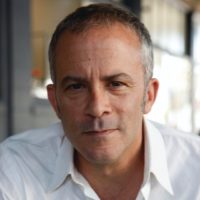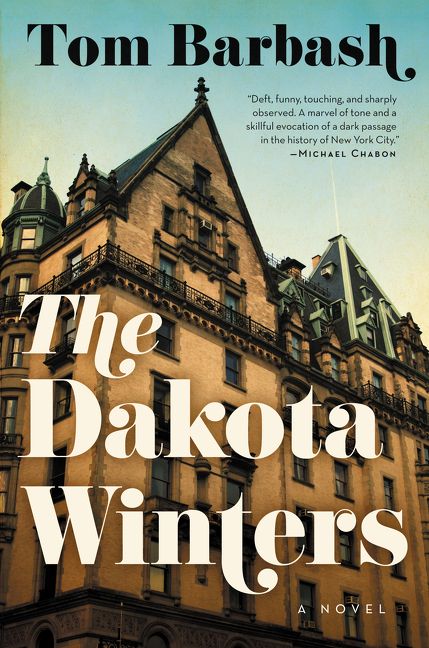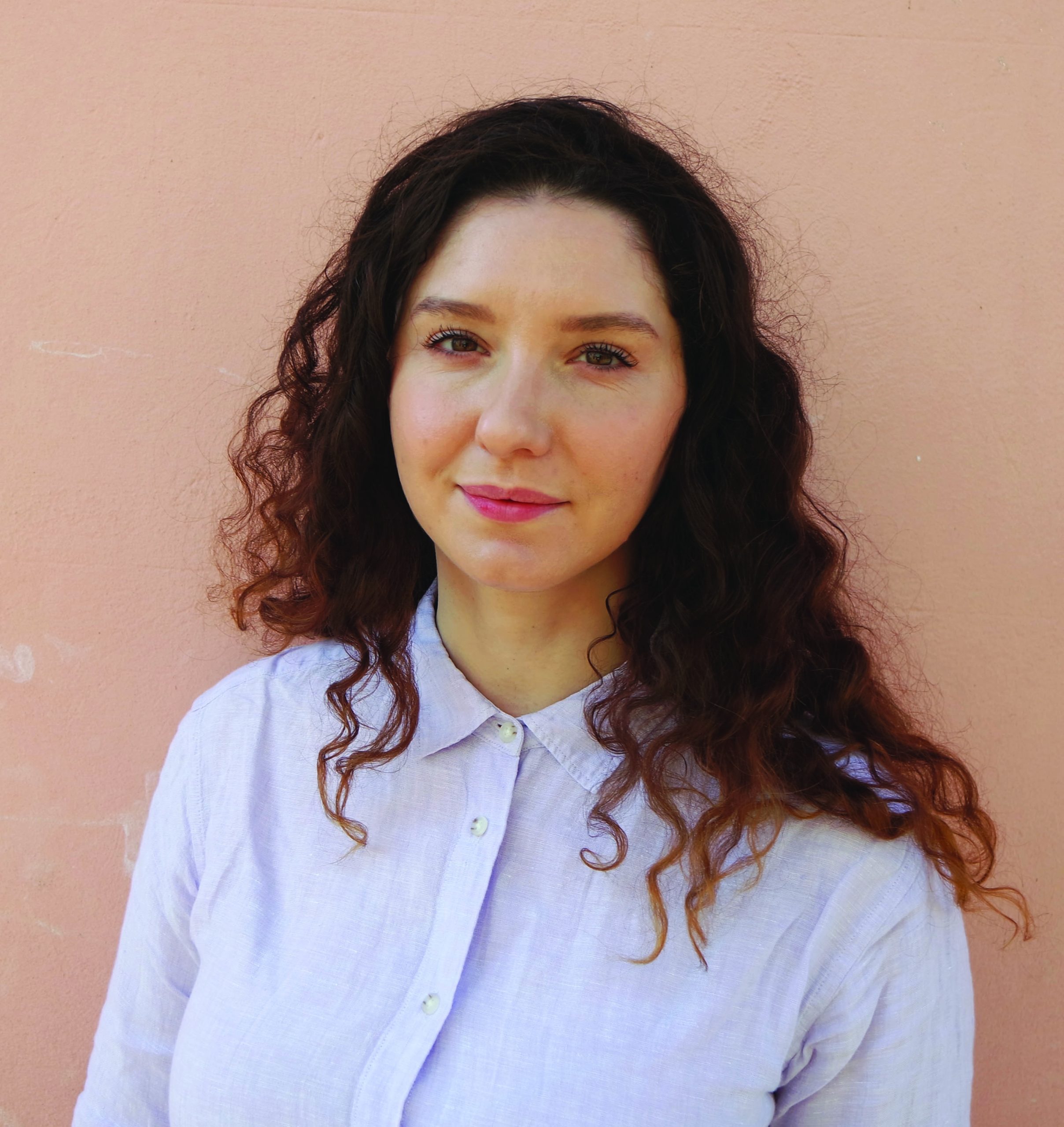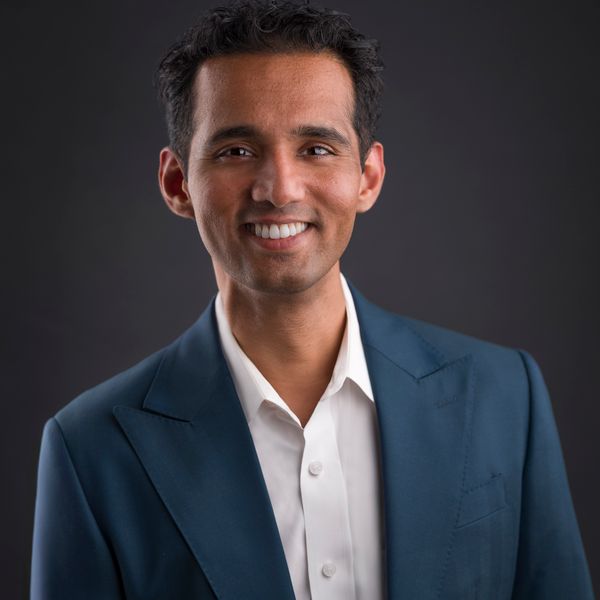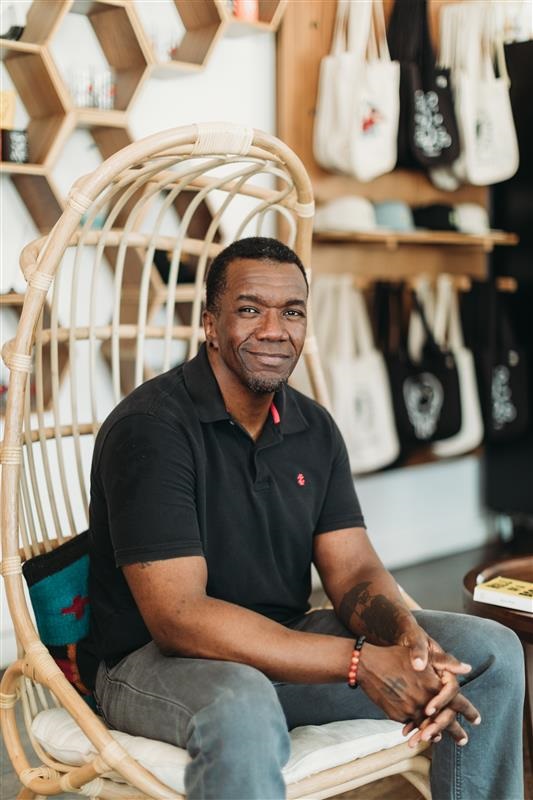The Rumpus Book Club chats with Tom Barbash about his new novel, The Dakota Winters (Ecco, December 2018), fathers and sons, and how to approach including pop culture history within a fictional novel.
This is an edited transcript of the book club discussion. Every month The Rumpus Book Club hosts a discussion online with the book club members and the author, and we post an edited version online as an interview. To become a member of the Rumpus Book Club, click here. Upcoming writers include Esmé Weijun Wang, T. Kira Madden, Maylis de Kerangal, Nicole Dennis-Benn, Trisha Low, Ayse Papatya Bucak, and more.
And, thrill any and all readers on your holiday shopping list with a Rumpus gift subscription—we have 6-month and 12-month subscriptions to our incredible Book Club, and 6-month and 12-monthsubscriptions to the equally awesome Poetry Book Club! (And if you’re really out to impress a reader in your life, sign ‘em for both clubs here.) All subscriptions come with a PDF you can print out and slip under the tree!
This Rumpus Book Club interview was edited by Marisa Siegel.
***
Marisa: Hi, and welcome to The Rumpus Book Club chat with Tom Barbash about The Dakota Winters!
Eva Woods: Hi! So excited for this chat!
Tom Barbash: I am, too!
Nicole G: Hi Tom! Loved your book. I’d love to know how you created this “world”—it was an amazing blend of real and fiction….
Eva Woods: Tom, thanks so much for talking to us! Going off of what Nicole said, can you talk a little bit about handling historical fact so carefully, as you had to (and did, I think) with the death of John Lennon?
Tom Barbash: Thanks so much, Nicole. I knew I wanted to set the book in the last year of John Lennon’s life and that I wanted it to be about a family that lived in the building. His neighbors. So I spent my days in 1980 as I was writing. I read the archived New York Times every day and I listened to the music from that year. I could see the listings in the New Yorker and knew what bands played at which clubs. It really was a lot of fun doing this.
Tom Barbash: And Eva, your question is a good one, because I had a challenge for sure putting John in the book; primarily I feared his presence would overwhelm the story, and it was important to me to put the Winter family in the foreground and not have John be the main focus.
Nicole G: Huh, very cool. Really clever way you made it about Buddy, but not really. And about John, but not really. And about Anton, but not! Really nicely done
Eva Woods: The father/son relationship in the book was really interesting to me. The son reminded me a little bit of Bertie Wooster somehow! It also made me think about the opposite relationships, like Justin Bieber and his father. Were there any real life examples that inspired this relationship? Or how did that come about for you?
Tom Barbash: I think I started out with this notion of a boy who grows up worshipping his father, and then to spend time with his celebrity father working alongside him on the show. And then over time Buddy becomes more dependent on Anton and Anton begins to resent that just a bit.
Nicole G: What I think is so interesting, is that it reads like a biography… I kept thinking it had to be you (as Anton). You really crafted him well; I totally understood his shift in emotions.
Tom Barbash: I’m interested in that time in a young person’t life when your parents—who’ve been mostly invulnerable—suddenly seem vulnerable, and might even have needs, and how unsettling that can be.
Tom Barbash: Rachel has that line: parents are meant to be fixed objects, not abstract paintings.
Eva Woods: That’s really interesting. I think about that a lot, and how my dad is still sort of a superhero to me.
Nicole G: Wait, our parents have needs? Total malarkey! 😉
Tom Barbash: Ha! That’s it exactly Nicole. I remember my own father showing vulnerabilities when my mother was sick, and thinking, No, this is my mother. You’re not supposed to fall apart.
Marisa: Does your real-life experience of being a father come into play at all?
Tom Barbash: Yes, Marisa. I thought of what it would have been like for Kip to have his father vanish. I’ve never been away from my boy for more than a week.
Eva Woods: The novel had a lot to say about wealth, but after I finished I couldn’t tell exactly what. What do you think Anton’s end point in relationship to his father’s wealth when he was young is, after the book ends?
Tom Barbash: So the money aspect is interesting, because of course Buddy at the start of the novel hasn’t had a job in two years and is still living like a star and they’re running through their savings. Anton though is aware of the advantages he has because he’s Buddy’s son. And wants to do something of his own where he doesn’t feel Buddy’s hand helping him out.
Eva Woods: It’s interesting to think about the link between realizing your parents are mortal and needing independent success from them. You have to feel like one causes the other.
Tom Barbash: I think we sometimes decide to do the opposite of what our parents want thinking that’s independence, when I think it still means your in some way under their control. Anton begins to realize he actually likes producing; he just doesn’t want to work for Buddy anymore.
Eva Woods: Sometimes the independence pendulum has to swing pretty far the other way before it finds where to rest!
Nicole G: The book makes me wonder what John Lennon was “really” like. Do you think you got a good sense of it from your research?
Tom Barbash: Good question, Nicole. So, most of the books about John are either fawning or extremely critical. I wanted to see if I could get to the point where I had something new to say. And what I think his last year was all about was the sea—the desire to learn how to sail, and then to disappear from the world on a boat like the Megan Jaye. That, and being a father. But I believe in those last months he was very productive, and pretty happy and had a lot of exciting things ahead of him.
Eva Woods: As you said, Tom, the details about John Lennon were sparse and carefully chosen, but I’m wondering about the decision to choose him to weave into the story at all, given his history of violence against women. Was that something you thought about going in, and how did it come up in the writing?
Tom Barbash: Eva, because of the limitation of the first person, specifically Anton’s perspective I was limited to what he might see. Though the question of John’s actions certainly came up in my reading.
Eva Woods: Did that affect how you felt about him being in the story?
Tom Barbash: Eva, yes, it did affect the way I felt about him. I kept alternating from horror at some stories to affection at others.
Nicole G: I bet it was the same for Yoko Ono—I’ve heard many conflicting stories about her, too.
Tom Barbash: Nicole, yes. Their are two camps. And I’ve read the arguments on both sides.
Eva Woods: This book had some amazing settings! I’m in LA, and I really loved your description of Hollywood. Can you talk about the Dakota and the other settings a little bit?
Tom Barbash: Ah, settings! Yes, Eva, part of the fun of this book for me were all the places I got to go in my mind. I did physically go to the Dakota. My stepmother is friends with a family who live there and invited me in. And my writer friend Nina Solomon grew up there and also brought me in. I got to walk the hallways and go up to the eighth and ninth floors which really fascinated me. The idea of a hidden other world within the Dakota.
Nicole G: What was your biggest challenge in writing this? Was there one area that was particularly difficult to write about?
Tom Barbash: Nicole, there were several. For one I didn’t grow up on a TV show, and so I had to learn all about talk shows and pitching a new show, and about writing jokes for monologues and for stand up. It was a challenge but a lot of fun. and then figuring out the ways in which the storylines would come together.
Tom Barbash: I also took a bunch of sailing lessons!
Nicole G: Sweet. Now I want to write a book! If I get to “experience” what I’m writing about… sounds like a GREAT way to earn a living. Maybe I need to write a book about expensive French cuisine…
Tom Barbash: Nicole, what you just said is exactly it. When you think of what you want to write next why not pick a world you want to explore? I’d read your novel about expensive French cuisine.
Nicole G: Oh, let me clarify: a book about expensive French cuisine, while eating it on a slightly deserted island (clearly some of the remaining Dakota wait staff on hand to help), while I learn Tai Chi and Buddhist meditation skills. I guess there might have to be some sort of conflict (drama amongst the staff?) to make it readable, though…
Tom Barbash: I think there’s like an interesting backstory about the French chef who meditates and knows Tai Chi.
Nicole G: LOL! Are we writing MY book? I’m loving it. You have a great sense of humor; thanks for playing along with my silliness. Your humor also comes through in the book. I liked Kip’s humor.
Eva Woods: How did you go about educating yourself on how Hollywood worked?
Tom Barbash: I’ve got three friends who worked in different areas of the business. One childhood friend had been an assistant on The Dick Cavett Show. Another had pitched dozens of shows to the networks.
Marisa: Tom, you mentioned research around John Lennon—did you similarly research the Dakota? I grew up in New York, and the Dakota is a building that looms, that you are just aware of culturally like the Empire State Building. It seems both ripe territory for a writer but also like it comes with a lot of baggage as subject matter.
Tom Barbash: Marisa, I grew up five blocks away. And so it was always a part of my imagination, that big looming haunted castle. There’s also a great book by Stephen Birmingham, Life at the Dakota, which contain amazing material about the building’s history. The fact that they once had a staff of two hundred and fifty, their own laundry, and restaurant with waiters in fancy uniforms, and a tennis court and a croquet lawn…
Tom Barbash: I was also interested in the idea of a place where people like John and Buddy and Leonard Bernstein and the rest could feel normal. Like neighbors in a village. And how hard it might be for them to live their lives like everyone else so much of the time.
Eva Woods: One of the things this book does which I think is really rare is that we know the ending, at least partially. That seems like a really difficult challenge, but one that might be fun to write around. Can you talk about that?
Tom Barbash: You’re right, Eva. You know it, and yet I wanted your focus to be elsewhere, so that you were primarily focused on whether Buddy’s show will survive or not, and then there’s this hope that maybe, just maybe, the band will get back together for a night.
Eva Woods: What was it about the timeline that attracted you? The essential story is so timeless, but the setting and especially the era was so integral to the book as a whole.
Tom Barbash: Like Kip, I played the junior tennis circuit as a kid.
Nicole G: Ah, cool. That’s a grueling sport. Are you more like Kip or Anton? (Or Rachel!)
Tom Barbash: Tennis was huge in New York in the 70s and early 80s. Two New Yorkers played in the finals of the US Open in 1979: John McEnroe and Vitas Gerulaitis. We all worshipped them.
Tom Barbash: I couldn’t tell you Nicole. I try as I write to see things from all of their perspectives.
Nicole G: I have to run—but thank you for your time, Tom! Really enjoyed your book. 🙂
Tom Barbash: Thanks Nicole! Get cracking on that novel.
Eva Woods: This is your fourth book, I think? Can you tell us about how you approach new ideas and how your books feel different to you, from your side of it?
Tom Barbash: Eva, what I would say is that it’s good every time you write a book to do something that’s beyond your capabilities, and then you do it and it’s no longer beyond you.
Tom Barbash: What I mean is that each time I begin and at some point I think to myself, I’m screwed. And this time was no different.
Marisa: I always like to ask what writers/books you think your book is in dialogue with, or which writers were influential for you in terms of the book.
Eva Woods: To go along with Marisa’s question, what other art were you taking in while you were writing this book? Music, movies, etc?
Tom Barbash: Ragtime is an amazing book, and was helpful. I loved, too, how Jess Walter created Richard Burton on the page in Beautiful Ruins. The Great Gatsby was a big help, too.
Tom Barbash: As for music, that year was a goldmine. I love the bands from then—The Clash, The Pretenders, Gang of Four, The Jam. Good year for movies, too—Apocalypse Now, Kramer vs. Kramer, Breaking Away.
Eva Woods: What do you have coming up? Are you working on anything new yet?
Tom Barbash: A new novel is in the works. I can’t say too much about it yet for fear I’ll stop in my tracks.
Eva Woods: Well, if it’s about French cuisine, we know who to send for you!
Tom Barbash: I just need a week full of gourmet meals to light my creative fire I think. I’ll ask my publisher about this.
Eva Woods: Before we go, are there any other books you’d recommend for people who loved this one? Other lightly historical fiction maybe?
Marisa: Good question, Eva! We have just a few minutes left. Tom, any reading recommendations for fans of The Dakota Winters? Or just books you are loving right now?
Tom Barbash: Yes, there’s a terrific new book coming out by the novelist Christopher Castellani, called Leading Men, and it’s got Tennessee Williams and Truman Capote in it, and its utterly original and very, very good.
Tom Barbash: I also love another book about old New York called The Gargoyle Hunters by John Freeman Gill. A great father and son tale. The two of them steal historic artifacts, including gargoyles—in their minds, saving them from destruction. It so good.
Marisa: Thanks so much for taking the time to talk with us tonight, Tom! And Eva and Nicole, thanks for joining in.
Eva Woods: Thanks Tom! Have a great night.
Tom Barbash: Thanks folks. This was a blast!
***
Photograph of Tom Barbash © Sven Wiederholt.
